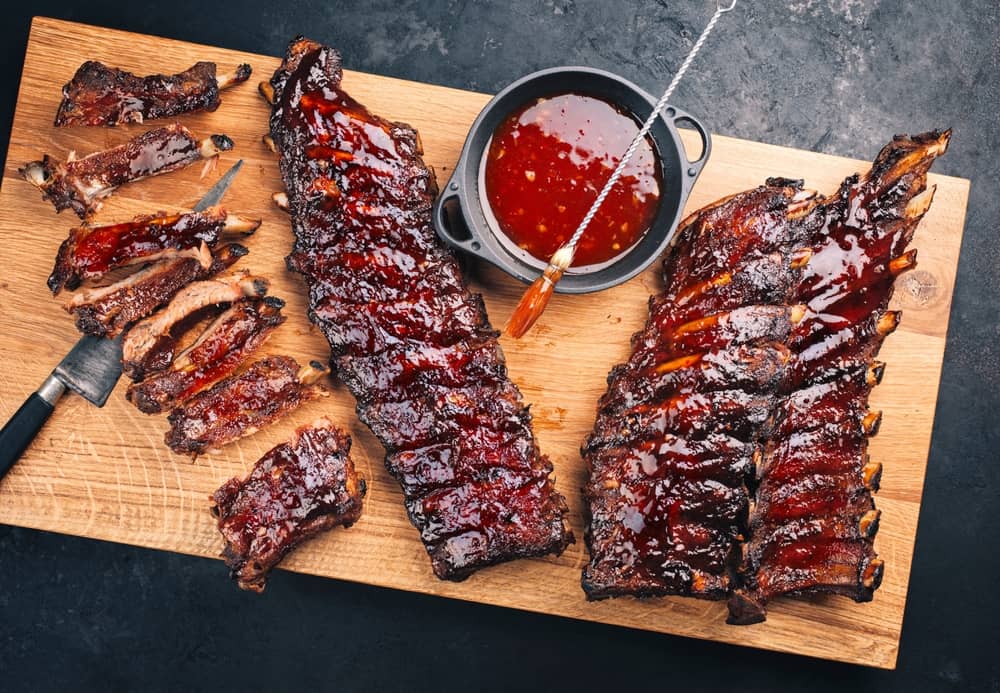
Mastering ribs starts with understanding the options. This guide tours types from meaty spareribs to quick-cooking loin ribs, detailing flavors, textures, prep tips, and best cooking methods. Get to know your cuts so you can pick perfect ribs to match techniques and wow guests every time.
1. Baby Back Ribs
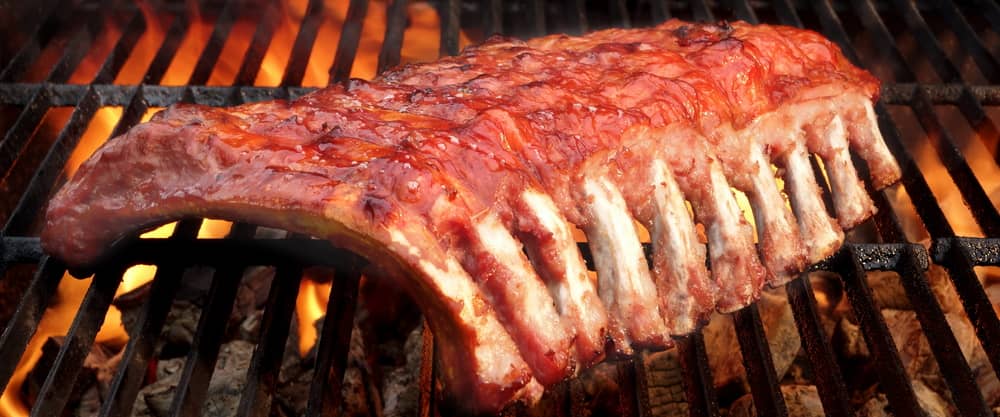
Baby Back Ribs hold an esteemed status in American barbecue culture, gracing backyard cookouts and professional smokehouses alike. Their name pays homage to their petite size compared to other rib types, but their tender texture and subtle flavor deliver outsized enjoyment. From Memphis dry rubs to Kansas City sweet glazes, Baby Backs pair beautifully with regional barbecue styles.
Understanding what sets Baby Backs apart starts with their anatomy. Let’s explore what gives these little ribs their unmatched appeal on the barbecue circuit.
Characteristics of Baby Back Ribs
Hailing from the upper rib cage near the spine, Baby Back Ribs offer supreme tenderness in a lean, meaty package. The loin muscle remains loosely attached, keeping the meat succulent even after hours enveloped in smoke. With less connective tissue than spareribs, Baby Backs deliver bite-through texture you can savor.
Flavor-wise, Baby Backs let seasoning shine rather than overwhelming with pork punch. A quick soak in a salty brine ensures moisture, then a spice rub adorns the ribs’ surface as the key flavor vehicle. The meat’s neutral canvas drinks up barbecue sauce readily too. Whether you spotlight sweet, tangy, or spicy flavors, Baby Backs make your recipe the star.
Cut Location, Size, and Meatiness of Baby Back Ribs
Anatomically, Baby Back Ribs come from the upper rib cage spanning ribs 6 through 12. Shorter and more curved than spareribs, the typical rack measures around 13 to 15 inches long when trimmed. Expect 8 to 13 individual ribs depending on the hog and butcher.
The loin muscle stays connected to these top ribs, blessing Baby Backs with extra juiciness despite less overall meat. Less marbling means they cook up leaner than fattier spare and loin ribs. For rib aficionados, it’s all about tenderness over heft. The petite cut makes Baby Backs easy to prep, cook, and eat too.
Best Cooking Methods for Baby Back Ribs
When cooking Baby Backs, gentle, moist heat prevents them from drying out. Smoking, grill-roasting, and braising all let their texture and flavor shine. Keep temperatures between 225°F and 275°F and cook times around 2 to 4 hours. Spritz with apple juice or broth if desired.
Season Baby Backs simply to let pork notes peek through. A salty dry rub adds crunchy contrast without overpowering the meat. Brush with bold glazes toward the end or mix sauces tableside.
Beyond classics like barbecue sauce, try creative glazes featuring fruit, booze, or Asian flavors. Serve with traditional pairings like baked beans, coleslaw, and cornbread.
2. Spare Ribs
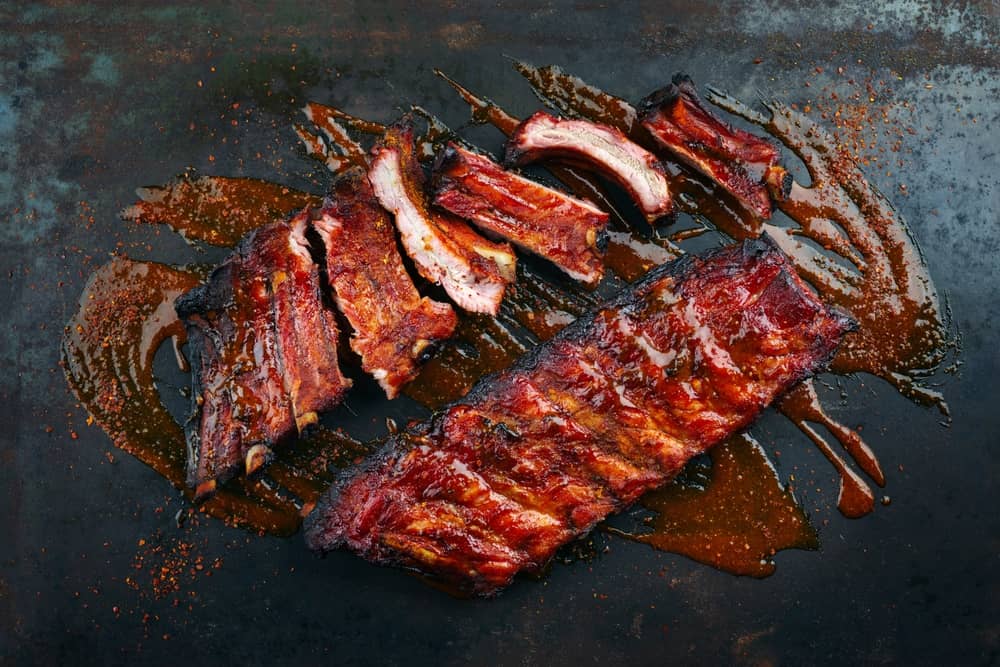
Spare Ribs anchor the barbecue traditions of the American South. Cut from the belly side of the ribcage, these meaty ribs pack bold pork flavor suited to low and slow cooking methods. Spare Ribs may lack the cachet of Baby Backs, but their rich taste and hearty texture make them a prized meal. Let’s explore why Spare Ribs captivate backyard pitmasters.
With more fat and connective tissue than other rib types, Spare Ribs take well to smoking, braising, and grill-roasting. Their anatomy gifts them with great flavor and makes them ideal for Southern barbecue’s signature melt-in-your-mouth texture.
Characteristics of Spare Ribs
Hailing from the hog’s underbelly, Spare Ribs deliver full-bodied pork flavor in every tasty bite. More fat marbling means rich, meaty taste with a satisfying chew. The high collagen content rewards patient cooks with fork-tender results.
To balance their lush flavors, Spare Ribs shine with sweet and spicy rubs. A salt, sugar, and spice crust forms succulent, peppery outer bark surrounding the tender meat within. Tangy barbecue sauce at the table adds another flavor dimension.
Cut Location, Size, and Meatiness of Spare Ribs
As the name suggests, Spare Ribs come from the spare parts area – specifically ribs 6 through 12 on the belly side. Shaped flatter and running longer than curvy Baby Backs, Spare Rib racks can stretch up to 18 inches long. Due to their abdominal location, Spare Ribs contain more meat between the bones along with signature fat streaks.
With more abundant marbling and thick rib bones to gnaw, Spare Ribs deliver a heartier eating experience compared to daintier rib cuts. Low and slow cooking melts away excess fat while dissolving connective tissue into rich collagen.
Best Cooking Methods for Spare Ribs
When tackling Spare Ribs, turning up the cooking time helps tenderize the extra muscle and fat. Methods like smoking, grill-roasting, and braising for 4+ hours render out flavorful fat and make ribs succumb to the slightest tug.
Season Spare Ribs aggressively before cooking since the meat stands up to strong flavors. Spice rubs with some sweetness balance the unctuous pork notes. Baste with barbecue sauce in the last 30-60 minutes only to avoid burning. Served alongside baked beans, coleslaw, and cornbread, saucy Spare Ribs make the ultimate Southern barbecue feast.
3. St. Louis Style Ribs
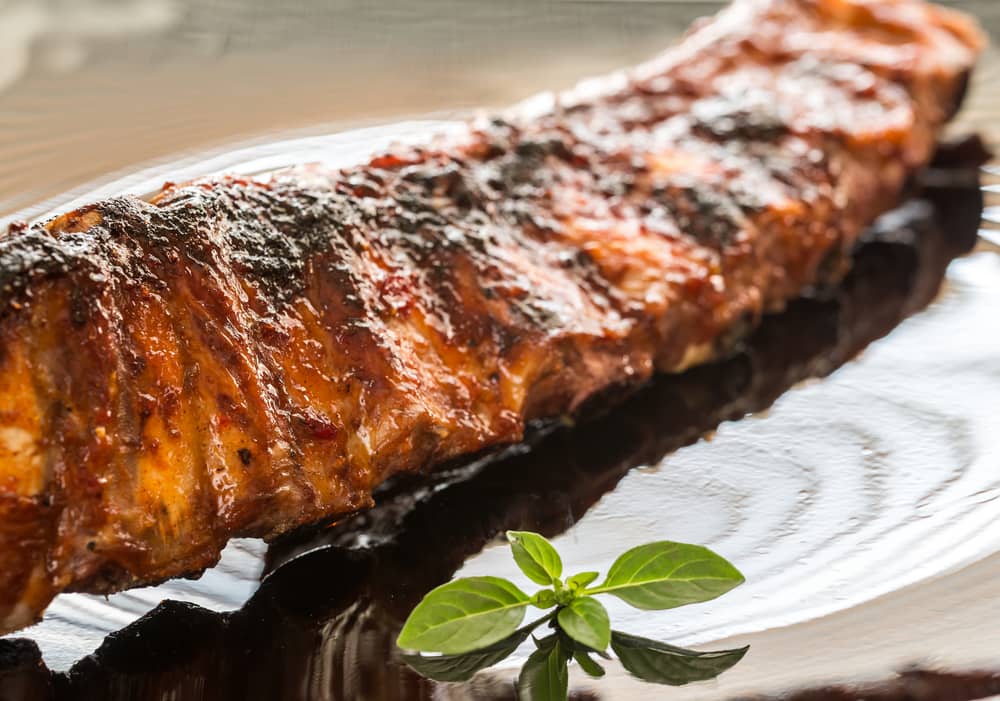
St. Louis Style Ribs hold sway as a go-to cut for backyard barbecuers and smokehouse pitmasters alike. Trimmed from Spare Ribs into uniform rectangles, these crowd-pleasing ribs blend meaty flavor with competition-friendly shape. Let’s explore the history and anatomy behind this barbecue staple.
Partially defatted for a tidy appearance, St. Louis Style Ribs occupy a middle ground between richly marbled Spare Ribs and lean Baby Backs. Their ample portions of meat suit most American barbecue styles, from Memphis dry rubs to sweet Kansas City glazes.
Characteristics of St. Louis Style Ribs
At their core, St. Louis Style Ribs offer similar rich, porky flavor to their Spare Rib originators. Trimming away the skirt meat and cartilage leaves behind a neat rack with excellent meat distribution. Seasoning adheres evenly across all sides, ensuring consistent flavors.
The rectified shape enables even smoker or grill heat exposure. With moderate fat content, St. Louis Style Ribs respond well to slow cooking and finish juicy without falling off the bone. Their texture suits a range of preparations from subtly smoky to sticky-sweet and boldly spiced.
Cut Location, Size, and Meatiness of St. Louis Style Ribs
True to their Midwestern moniker, St. Louis Style Ribs hail from the same belly/side rib section as Spare Ribs. Special attention comes during the butchering process when the brisket bone, rib tip cartilage, and skirt meat get removed. This produces a tidy, rectangular rack ranging from 9 to 13 bones.
Trimming down to the straight bone section distributes meat evenly from top to bottom. Due to fat and cartilage removal, St. Louis racks appear only slightly meatier than Baby Backs. Their ample portions still deliver plenty of rich, porky enjoyment compared to leaner ribs.
Best Cooking Methods for St. Louis Style Ribs
The uniform shape and medium fat content of St. Louis Style Ribs make them suitable for nearly any barbecue technique. They shine using indirect smoker heat around 225-250°F for up to 5 hours. Grilling over medium indirect heat works well too.
Season St. Louis Ribs with both dry rubs and sauces. Savory-sweet blends or spice-forward rubs adorn the meat first. Lightly basting the ribs with sauce in the last 30 minutes ensures caramelization without burning. Serve sauced, dry rub, or a half-and-half presentation based on guest preferences. Pair with classic barbecue sides like baked beans, coleslaw, and buttery cornbread.
4. Rib Tips

Overlooked by many backyard barbecuers, Rib Tips offer a flavorful, cartilage-rich way to explore new barbecue territory. As their name suggests, Rib Tips come from the narrow lower ends of ribs trimmed off to create uniform St. Louis Style Racks. Let’s delve into their anatomy and best cooking practices.
Despite their rough, irregular shape, Rib Tips brim with complex flavors waiting to shine through. Their high collagen content rewards patient preparation, transforming tough texture into succulent, finger-licking bites. Fans love them as a unique alternative to standard ribs.
Characteristics of Rib Tips
Comprised of a mix of meat, fat, and cartilage, Rib Tips deliver pronounced porcine flavor influenced by their abdominal location. Expect tasty meat between bits of chewy cartilage rather than a continuous strip like back ribs. Despite the work needed to break them down, their rich taste makes that effort worthwhile.
Smoking or braising for hours tenderizes Rib Tips’ connective tissues into luscious, lip-smacking gelatin. Basting them with sweet and tangy barbecue sauce in the last 30-60 minutes glazes the meat for added depths of flavor. Spice rubs accentuate Rib Tips’ pork essence too.
Cut Location, Size, and Meatiness of Rib Tips
True to their name, Rib Tips come from the narrow lower ends of Spare Ribs trimmed off when making competition-style St. Louis cuts. Irregularly sized and shaped, strips range from 2 to 6 inches long and 1 to 3 inches wide.
Since they contain meat nestled between cartilage, fat, and bone bits, Rib Tips appear less uniformly meaty compared to standard rib cuts. Don’t let that deter you – connecting tissue transforms into the most succulent bits after cooking.
Best Cooking Methods for Rib Tips
To balance Rib Tip texture, slow cooking with moist heat for 3+ hours delivers the best results. Methods like grill-smoking, oven-braising, or cooking low and slow in a smoker break down cartilage while tenderizing meat.
Season Rib Tips boldly to complement their intense flavor. Dry rubs work well, but basting with thick, sweet barbecue sauce creates an irresistible lacquered finish. For finger-licking goodness, try served sauced atop cornbread. Pair with classic barbecue sides like baked beans and coleslaw too. Due to long cook times, make Rib Tips the centerpiece instead of an accompaniment to quicker-cooking ribs.
5. Country-Style Ribs
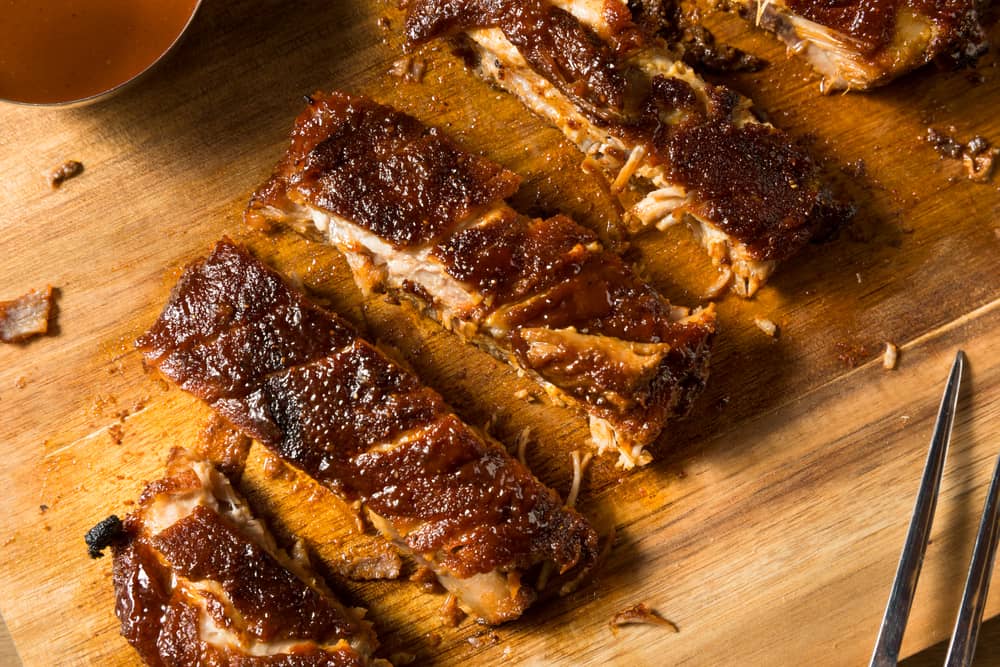
Country-Style Ribs stand out from traditional ribs with their meaty profile courtesy of the pork shoulder. Despite the name, they actually come from the loin instead of the rib area. Their tender texture and rich flavor make Country-Style Ribs a hit for home cooks. Let’s explore what defines this unique cut.
With ample marbling and minimal bone, Country-Style Ribs eat more like pork chops than spareribs. A versatile cut, they take well to direct grilling, oven roasting, braising, and more. Their milder pork flavor also plays nicely with a variety of seasonings from zesty rubs to sweet sauces.
Characteristics of Country-Style Ribs
Cut from the loin near the shoulder, Country-Style Ribs contain a good amount of well-marbled muscle per rib. Sections of bone run intermittently through the meat rather than along one side. This anatomy gifts each piece with incredibly moist, flavorful texture closer to steaks than ribs.
The meat’s mildness allows seasonings and sauces to take the spotlight. A salt and pepper rub adds crust, while barbecue sauce lacquers each piece for finger-licking, fall-off-the-bone finishes. Go sweet and sticky or spice-forward – the ribs handle both beautifully.
Cut Location, Size, and Meatiness of Country-Style Ribs
Anatomically, Country-Style Ribs come from the pork loin right near the shoulder/butt area, not the ribcage. Rib bones get cut into segments leaving a large portion of meat between each section of bone. Pieces vary quite a bit in size depending on butcher style.
Although they contain some bone, the predominant component in Country-Style Ribs is supple, well-marbled meat. Expect over twice the meat compared to traditional ribs. Their ample proportions eat almost like pork chops making them a great choice for rib lovers who want more meat than bone.
Best Cooking Methods for Country-Style Ribs
With their tender meat and marbling, Country-Style Ribs suit quick cooking over high dry heat or low and slow methods. Grill them quickly over medium-high heat, basting with sauce during the last few minutes. Or braise for 2-3 hours until meltingly tender.
Season Country-Style Ribs just before cooking to help flavors permeate the meat. Savory spice rubs or sweet glazes both pair well with their mild pork notes. Serve sauced or dry rub with classic barbecue sides. Due to shorter cook times, group them with quicker grilling foods rather than low-and-slow ribs.
6. Pork Loin Ribs
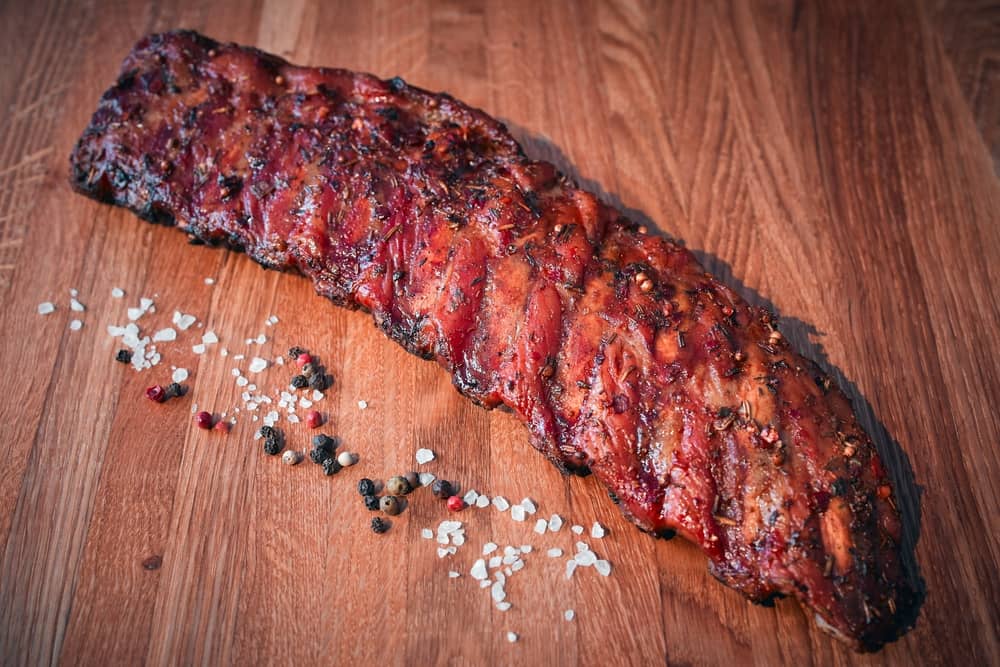
Overlooked on many barbecue menus, Pork Loin Ribs offer a delicate rib experience perfect for those seeking tenderness over hearty meatiness. Cut from the lean loin muscle running along the pig’s back, these little-known ribs have a milder taste and more subtle texture compared to standard rib cuts. What they lack in heft, they make up for in flavorful finesse.
Thinner and daintier than spare or back ribs, Pork Loin Ribs have a subtle pork essence that benefits from a light hand with seasoning. Their diminutive dimensions also make them suitable for quicker cooking methods focused on preserving moisture and texture. Discover what makes this niche rib variety special.
Characteristics of Pork Loin Ribs
Deriving from the loin muscle adjacent to the spine, Pork Loin Ribs contain veins of marbling between unified muscle running the length of the ribs. This anatomy gives them a solid meat presence despite their delicacy and leanness. With less connective tissue, they cook up incredibly tender without much effort.
Subtler in pork flavor than fattier ribs, Pork Loin Ribs let acidity, herbs, and spice shine through. A quick brine enhances moistness before cooking. Citrus zests or herby dry rubs adorn the exterior, lending complementary flavors without overpowering the meat.
Cut Location, Size, and Meatiness of Pork Loin Ribs
True to their name, Pork Loin Ribs come from the lean eye of meat running alongside the pig’s vertebrae. Rib bones get cross-cut into individual sections leaving tenderloin and silverskin attached for stability. Sections typically have 2 to 3 bones each and uniform width.
Although they contain both bone and meat, Pork Loin Ribs appear delicate due to their lean makeup and small portions. They have a higher meat to bone ratio compared to back ribs but less hefty portions than sides. These dainty ribs offer refined texture over mass quantity.
Best Cooking Methods for Pork Loin Ribs
The diminutive and delicate nature of Pork Loin Ribs makes them best suited for dry heat cooking methods using relatively high heat. Quick grilling or roasting at 375 to 400°F prevents them from drying out. Go low and slow if you prefer fall-off-the-bone texture.
Give lean Pork Loin Ribs a salt and sugar cure for an hour before cooking. Season minimally with citrus-forward rubs or herb blends rather than intense barbecue spices. Baste with glazes lightly towards the end or serve sauce on the side. Pair with lighter sides like vinegar slaw or roasted vegetables rather than heavy potato salads.
7. Meaty Loin Ribs
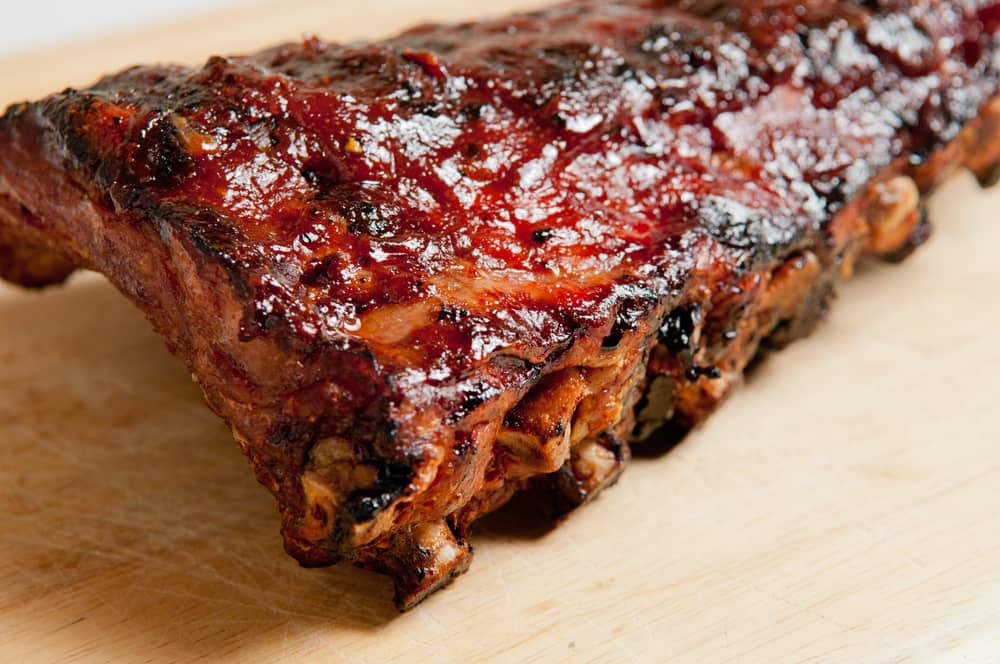
Meaty Loin Ribs up the ante on delicate Pork Loin Ribs with extra loin meat for added juiciness and pork punch. True to their descriptive name, these ribs get trimmed from the loin with a hearty portion of the flavorful eye muscle left attached. The result? All the tenderness of loin ribs encased in rich, meaty goodness.
The supple loin muscle complements the subtle flavor of Pork Loin Ribs beautifully. Extra meat means more surface area for seasoning and caramelization too. Whether you showcase the natural pork essence or complement it with sauces and rubs, Meaty Loin Ribs satisfy.
Characteristics of Meaty Loin Ribs
Meaty Loin Ribs offer the characteristic narrow shape of classic Pork Loin Ribs made meatier by a thick band of loin muscle topping the ribs. Expect over 50% more meat compared to their dainty counterparts.
With loin meat and rib bones working in tasty harmony, each piece offers supple, succulent texture contrasted by crispy, seasoned crust. The extra meat keeps Meaty Loin Ribs incredibly moist even when cooked quickly over high dry heat. People who find regular loin ribs too insubstantial will love this cut.
Cut Location, Size, and Meatiness of Meaty Loin Ribs
Coming from the same loin area near the backbone, Meaty Loin Ribs go the extra mile thanks to precise butchery. Skilled trimming leaves a 1-2 inch section of the flavorful loin muscle attached to the delicate rib bones. Pieces vary in size from 2 to 4 bone sections.
Make no mistake, the star components in Meaty Loin Ribs are the juicy meat layers enveloping each rib. Expect over twice the meaty coverage compared to Pork Loin Ribs alone for extremely satisfying eating. The loin addition makes them a happy medium between lean and richly marbled ribs.
Best Cooking Methods for Meaty Loin Ribs
The Meaty Loin Rib’s supple composition suits quick cooking to a juicy medium doneness. Methods like grilling, broiling, or hot roasting help render and caramelize the exterior loin meat while keeping ribs tender inside. Go for 300-375°F for 20-30 minutes. These also do well smoked low and slow.
Season Meaty Loin Ribs just before cooking and go bolder than with plain ribs. Sweet barbecue sauces or umami-packed dry rubs make excellent partners. For a herby flavor, try a basil pesto coating or lemon-rosemary marinade. Cook garlic cloves or onion wedges alongside for extra flavor infusion. Serve with lighter sides that won’t compete for attention.
8. Meaty Shoulder Riblets
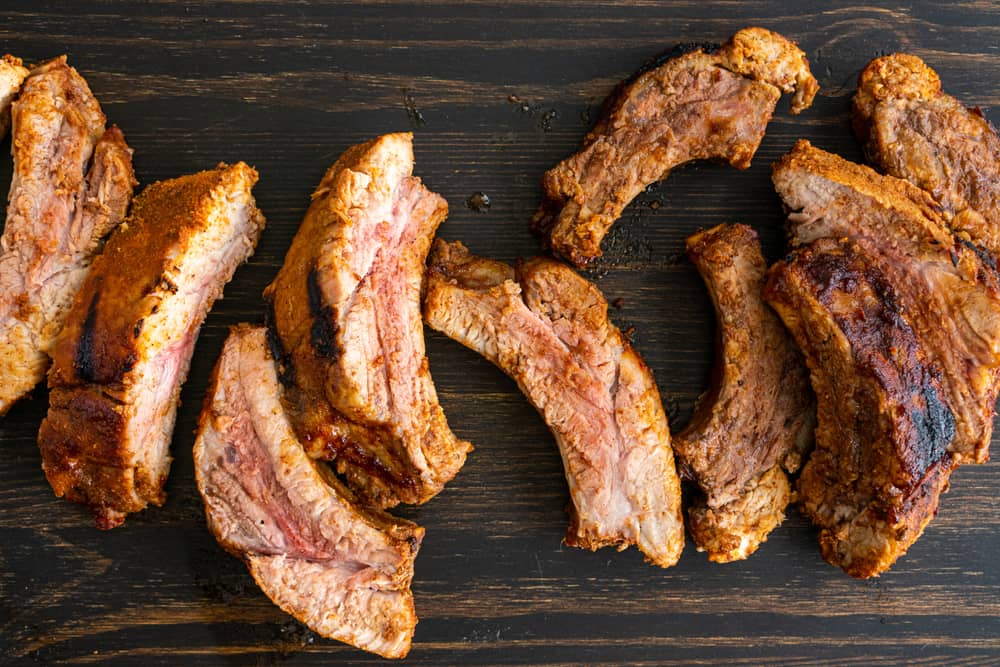
Overlooked by many home cooks, Meaty Shoulder Riblets offer a rich and flavorful rib experience courtesy of the well-marbled pork shoulder. As the name implies, these small rib pieces pack some serious meaty pedigree into compact portions ideal for finger food feasting. Let’s explore what gives these little ribs their big, bold taste.
Coming from high on the shoulder near the neck, Meaty Shoulder Riblets contain supple meat interlaced with ribbons of fat running between the bones. Slow cooking transforms all that lush collagen into succulent, pull-apart texture sending flavor straight to the tastebuds.
Characteristics of Meaty Shoulder Riblets
Cut right beneath the pig’s collarbone, Meaty Shoulder Riblets deliver intensely porky flavor influenced by the hard-working shoulder muscles. Smaller rib bones let the meat take center stage rather than just being a conveyor for sauce like back ribs. Expect delicious, well-marbled meat between each nibbleable bone.
The abundant marbling responds well to moist cooking methods that render fat slowly into the meat. Well-seasoned rubs or sticky glazes permeate each bite, but the pork essence still shines through. These little riblets pack some incredible texture and taste into pint-sized portions.
Cut Location, Size, and Meatiness of Meaty Shoulder Riblets
Meaty Shoulder Riblets come from the first few ribs beneath the pig’s collarbone near the Boston Butt roast. Shaped like tiny Spare Ribs, sections contain 3 to 5 small bones connected by fatty meat and skin. Pieces measure only 2 to 4 inches long when trimmed.
Make no mistake – the meat takes top billing with Meaty Shoulder Riblets. These ribs have more marbling than almost any other cut, blessing them with incredibly moist, porky flavor despite their petite size. Each little chunk eats like a meaty mouthful of rib heaven.
Best Cooking Methods for Meaty Shoulder Riblets
To achieve fall-off-the-bone results, low and slow moist cooking excels with Meaty Shoulder Riblets. Methods like grill-smoking, oven-braising, or cooking in a smoker for 3+ hours let fat render slowly. This transforms the meat into succulent texture.
Season Meaty Shoulder Riblets aggressively before cooking since the meat stands up well to big flavors. Dry rubs perform nicely, but basting with a sweet and sticky glaze creates a crave-worthy contrast to the pork. Served sauced atop cornbread or potato salad, these mighty mini riblets guarantee finger licking satisfaction.
Selecting the Right Type of Pork Ribs
With so many cuts competing for your attention at the meat counter, choosing the best ribs for your meal requires some strategy. Factors like cooking method, group size, and personal taste preferences all impact what ribs work best. Arm yourself with details on each variety so you can serve crowd-pleasing results every time.
Certain rib types match better with certain preparations. Leaner cuts take well to quicker, hotter cooking while well-marbled ribs shine through low-slow methods. Flavor profile and texture also play roles. Understand the strengths of each before tying on an apron.
Factors to Consider When Choosing Pork Ribs
The occasion makes a difference when selecting ribs. Hosting an all-day barbecue party? Choose meaty Spare Ribs purpose-built for low and slow smoking. Planning a quick weeknight dinner? Opt for quicker-cooking Baby Backs.
Your cooking method also determines which cut excels. Hot, fast grilling works better with more delicate ribs like Pork Loin that would dry out using a slower technique. If you want to infuse deep smoke flavor for hours in your backyard pit, choose well-marbled Spareribs.
Don’t forget personal preferences too. Meat lovers may enjoy the heartier portions of Country-Style Ribs while those seeking a lightly seasoned canvas for sauce favor Baby Backs. Dietary needs matter as well. Opt for leaner ribs if limiting fat intake.
Tips for Identifying High-Quality Pork Ribs
Once you decide which variety suits your recipe, look for signs of freshness at purchase. Ideal ribs have bright white bones contrasting with deep red meat. Meat should run evenly between each rib rather than concentrating in clumps. Skin should appear taut, not shriveled.
Avoid ribs with “shiners” where meat got cut too close to the bone. Also inspect for jagged edges that indicate rough butchering. Both make poor candidates for flavorful results. For top quality, aroma offers insight too. Seek out ribs with a mild, meaty smell without pungency.
Following these simple guidelines helps guarantee your ribs cook up deliciously every time. Now that you know how to identify the prime cuts, get ready for phenomenal flavor. The only thing left is choosing your family’s favorite barbecue sauce or spice rub to adorn those perfect pork ribs headed home with you.
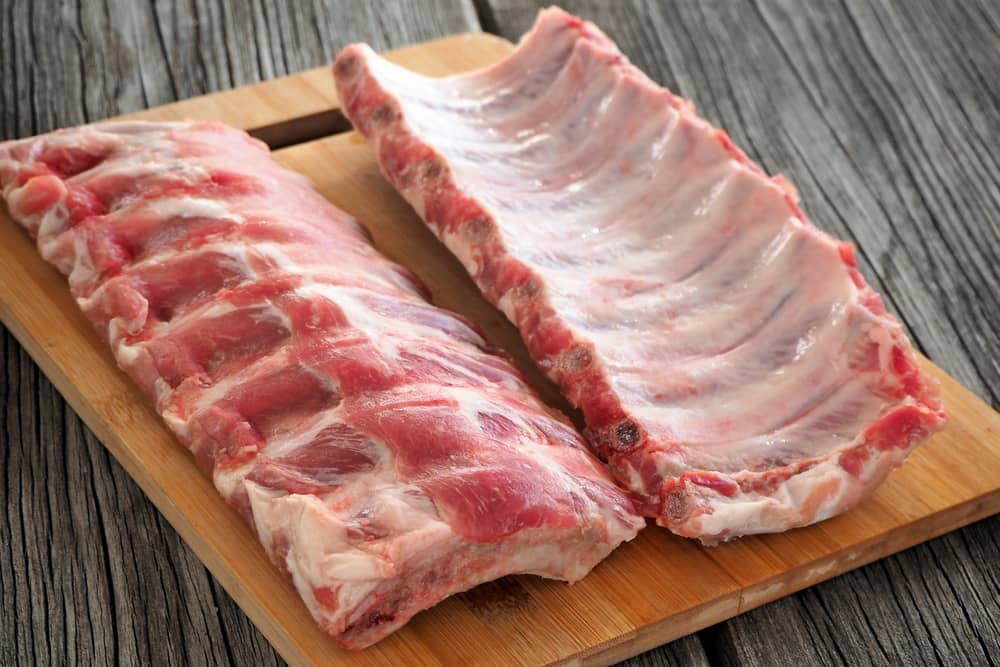
Conclusion
Exploring the world of pork ribs is a delicious journey filled with diverse flavors, textures, and cooking techniques. Whether you prefer the tender, flavorful baby back ribs, the meaty and succulent spare ribs, the rich and hearty St. Louis-style ribs, or the unique, juicy country-style ribs, there’s a perfect rib for every palate and occasion.
Understanding the distinct characteristics of each type allows you to choose the best method to cook and season your ribs, ensuring a mouth-watering result every time. From the smoky goodness of slow-cooked barbecue to the savory satisfaction of oven-baked ribs, mastering these techniques will elevate your culinary skills and impress your guests.

